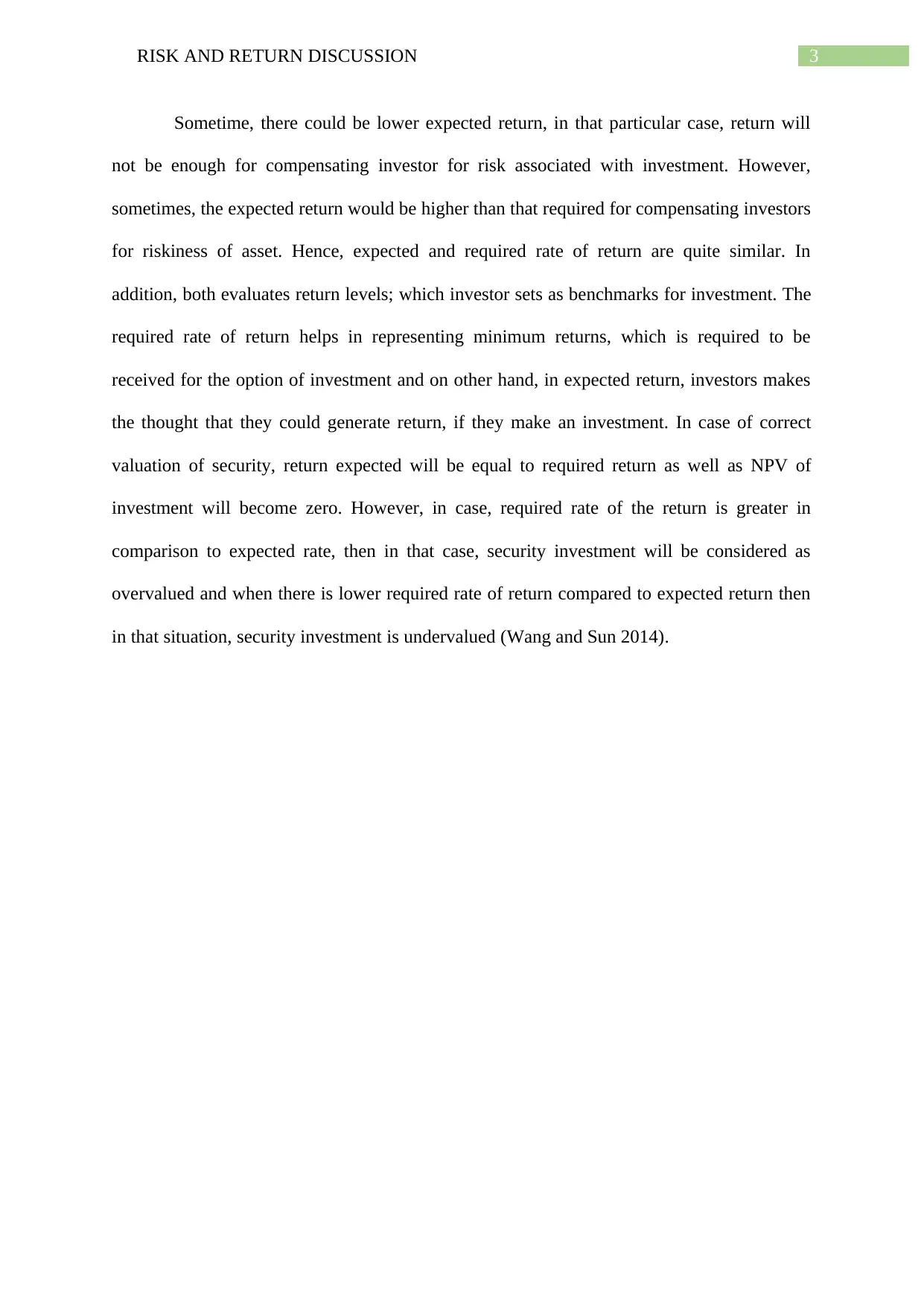Risk and Return Discussion: Expected and Required Return Analysis
VerifiedAdded on 2022/08/13
|5
|743
|20
Discussion Board Post
AI Summary
This discussion post delves into the core concepts of risk and return within the realm of finance. It differentiates between expected and required rates of return, elucidating their significance in investment decisions. The post highlights how investors anticipate returns commensurate with the perceived level of risk, emphasizing the importance of these metrics in evaluating investment opportunities. Furthermore, it explores the calculation and interpretation of holding period returns, providing a comprehensive understanding of how investments perform over time. The discussion also touches upon the Capital Asset Pricing Model (CAPM), offering insights into how it can be used to assess whether the expected return of an asset sufficiently compensates an investor for the associated risks. Overall, the post provides a clear analysis of the fundamental principles of risk and return, offering a valuable resource for students studying finance.
1 out of 5












![[object Object]](/_next/static/media/star-bottom.7253800d.svg)